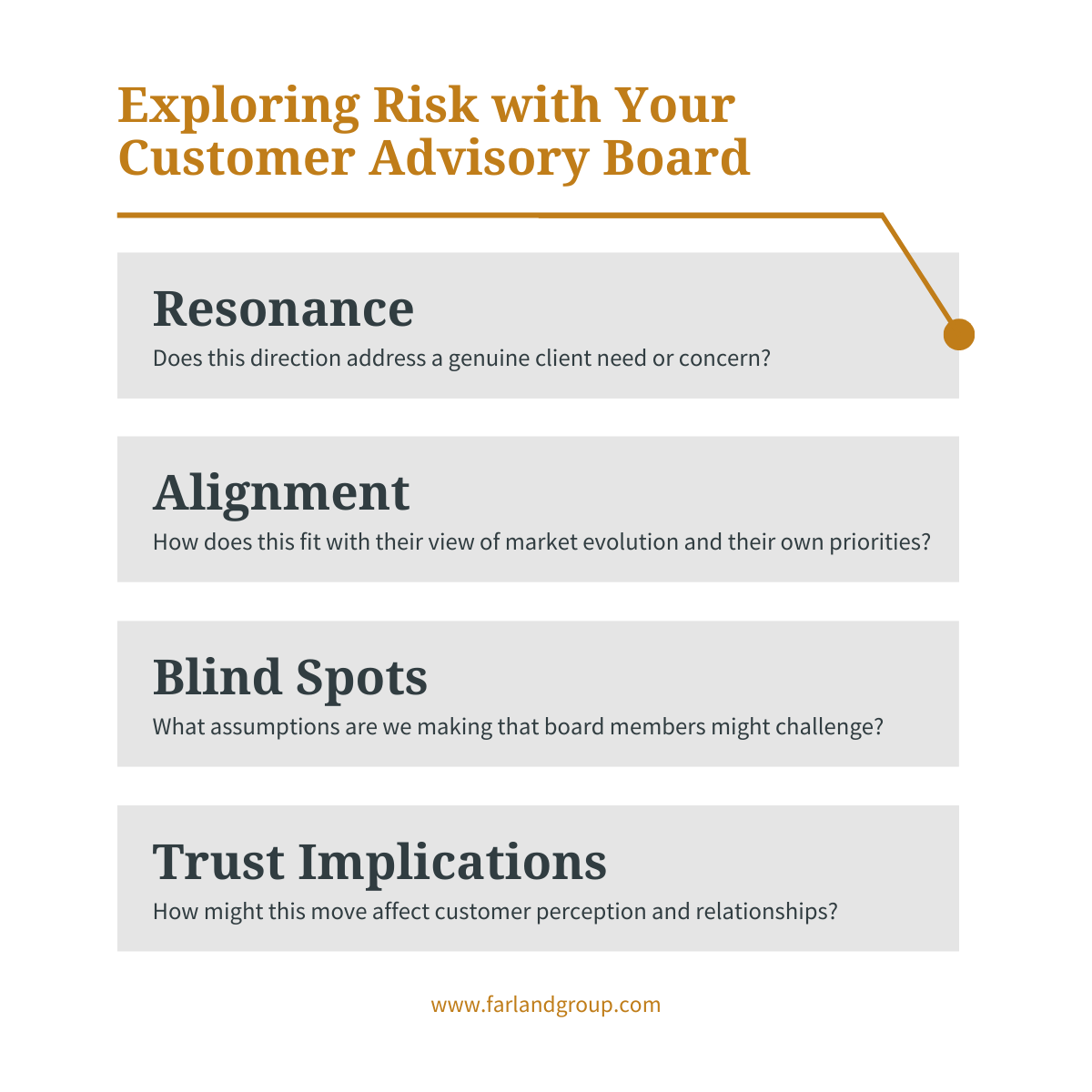Customer Advisory Boards: Your Strategic Risk Laboratory
According to this year’s CEO Study by the IBM Institute for Business Value, the paradox facing today’s CEOs is striking: playing it safe is actually the riskiest move they can make.
64% of CEOs believe they must take more risks than their competitors to maintain an advantage in the market. Yet simultaneously, 65% acknowledge that customer trust, not features or services, will have the greatest impact on their organization's success.
This tension between bold action and maintaining trust isn't new, but it may have reached unprecedented levels as AI and other technologies simultaneously offer both transformative potential and disruptive uncertainty.
So how do you innovate boldly without risking the customer relationships that are your most valuable asset?
The Board as Risk Laboratory
Customer advisory boards can provide a sort of “strategic risk laboratory”— a controlled environment where executives can test bold ideas with their most important customers before fully committing to organizational resources. Unlike focus groups or market research, which tend to be transactional, advisory boards create an ongoing dialogue with senior clients who have skin in the game in your mutual success.
In our work with global B2B companies, we've seen boards function as powerful environments to:
Test high-stakes strategic shifts with minimal market exposure
Validate assumptions about customer priorities and needs
Identify blind spots in leadership thinking before they become costly mistakes
Build trust capital that supports experimentation
The key is structuring these conversations properly. You're not seeking approval for decisions already made, but genuinely testing hypotheses and gathering insights that will shape your direction.
Creating a Risk-Trust Feedback Loop
The most effective boards establish a structured way to explore innovation while strengthening relationships rather than endangering them. Creating this feedback loop requires:
Transparency about uncertainty: Sharing what you know and what you don't know
Vulnerability about challenges: Opening up about strategic questions still being debated internally
Structured follow-up: Demonstrating how board input influenced decisions
Celebration of mutual success: Acknowledging when board guidance led to positive outcomes
This approach converts what could be a liability (uncertainty) into an asset by involving customers in your journey, creating shared ownership in the outcome.
Use Your Board to Identify Smart Risks
Not all risks are created equal. Some offer potentially transformative rewards while others simply expose you to downside with limited upside. Your advisory board can help you distinguish between the two.
The process isn't complex, but it requires discipline. For each potential strategic risk, structure board conversations to explore:
Resonance: Does this direction address a genuine need or concern for our most strategic clients?
Alignment: How well does this fit with their view of market evolution and their own priorities?
Blind spots: What assumptions are we making that board members might challenge?
Trust implications: How might this move affect customer perception and relationships?
Done well, this approach allows you to make decisions with confidence rather than certainty, a distinction IBM's study highlights as crucial for effective leadership in uncertain times.
Moving Forward with Strategic Courage
When the safest path paradoxically requires more risk, customer advisory boards provide a structured approach to taking those risks intelligently. They don't eliminate uncertainty, but they allow you to navigate it with greater confidence.
“Make courage your core. Courage doesn’t come from certainty. It comes from confidence: knowing you have the right information, talent, and resources to deliver on the organization’s growth strategy, even as your teams navigate the unknown.”
The businesses that thrive in the coming years won't be those who avoided risk, but those who took the right risks, informed by deep customer insight and supported by relationships built on trust. A well-constructed advisory board gives you both.


